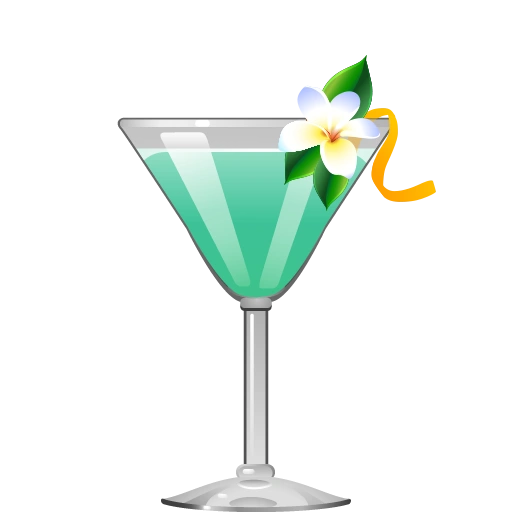Ah, the iconic blue cocktail, long-maligned by cocktail snobs and feared by many a drinker who, in the fresh bloom of youth, imbibed one too many sickly-blue high-fructose concoctions and swore off the stuff for life. But not so fast, dear reader! Turns out: some blue drinks are good, actually.
We cannot begin to talk about the blue cocktail without mention of the key ingredient: Blue Curaçao. Most commercially-available bottles contain little more than orange-flavored, blue-hued sugar water. But this ingredient has a long and storied history, and there are indeed higher-quality bottlings available, particularly those made by French brands like Drillaud, Giffard, and Marie Brizard.
While the exact historical path of blue curaçao is shrouded in mystery, distillers have been producing a liqueur based on the extracted oil of the otherwise too-bitter Laraha orange for hundreds of years. Lucas Bols, a seventeenth-century distiller, is credited with a laraha-based recipe, characteristically adding a bit of “alchemical mystery” by way of blue food coloring. Modern versions of blue curacao use C37H34N2Na2O9S3 – otherwise known as the additive “Blue 1” – to achieve this effect.
The prettiest blue drinks are those made with clear ingredients – gin, typically. The Blue Train is one of the oldest known blue cocktails, and in fact predates the invention of blue curaçao; its inventor Harry Craddock colored it with a homemade “blue vegetable” extract in the early days. For a more daring gin-based experience, the classic joke-drink-turned-serious-drink Corpse Reviver No. Blue contains a surprisingly delicious mélange of flavors including white wine apéritif and absinthe. For a more tropical vibe, try the Aqua Pearl, a fragrant delight featuring the funky-pineapple-banana flavor of soursop nectar.
When it comes to beautiful cocktails, though, few can hold a candle to the Juan Ho Royale, a surprising tequila cocktail topped with sparkling wine for a true-blue color and an effect not unlike a glittering blue topaz. This is the one to whip out when someone starts talking trash about blue drinks; it’s never failed to convert.
The Best Year, our sole blue vodka drink, was originally created in the disco era of the 1970s and brings the fun with flavors including pineapple, vanilla, lime, and Aquavit for a just barely-perceptible herbal note, along with a pretty turquoise color. All pineapple-and-blue-curaçao drinks are at least a little bit green, but even green-skewing drinks like the Blue Daydream, with its spiced rum, cognac and citrus peel, are too delicious to leave off the list. On the same continuum, we have the light-rum-based Blue Ricardo, with coconut syrup, pineapple and passion fruit, displaying a gorgeous blue-green-yellow gradient from the small measure of blue curaçao topping the finished drink.
The Blue Lagoon introduces us into the broad category of blue rum-based concoctions. Mixologist Gaby Mlynarczyk takes us on a journey of flavor with the help of light rum, pineapple syrup, lime, egg white, and just a pinch of salt for the adventurous at heart. Or, consider a classic double feature: the Blue Hawaii and the Blue Hawaiian. Both of these drinks showcase the gorgeous blue of curaçao: the Hawaii is brighter and fruitier owing to the addition of lemon and citrus vodka, while the Hawaiian has a mellow, creamy flavor thanks to cream of coconut.
Blue cocktails don’t have to be fussy affairs; consider the Aquadisiac, a simple four-ingredient cocktail with a tiki-styled flair, thanks to healthy pour of aged rum and the floral-almond flavor of orgeat. But if you are drinking blue, why not embrace that sweet, over-the-top, nostalgic flavor? Our favorite tiki stunner is Fanny Chu’s KiKiKōlada, a strong, sweet, neon-blue tipple featuring pineapple liqueur and pineapple juice, along with overproof white rum and rhum agricole.














